UK PMI manufacturing was finalized at 13-month low of 55.2, down from February’s 58.0. S&P Global said new export orders contracted for the second month running. Inflationary pressures strengthened.
Rob Dobson, Director at S&P Global, said: “Manufacturers are being hit by several headwinds simultaneously, as supply shortages, greater caution among clients, escalating inflationary pressures, ongoing Brexit factors and rising geopolitical tensions all hamper the upturn. It is therefore little surprise that business optimism has slumped to a 14-month low.”




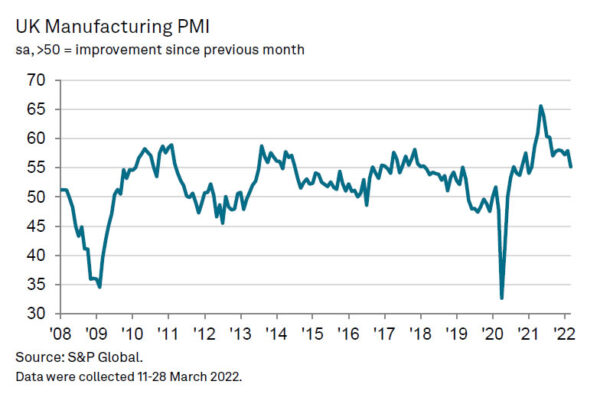
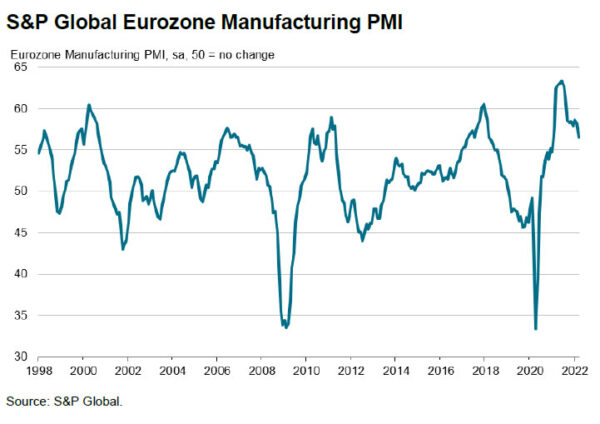
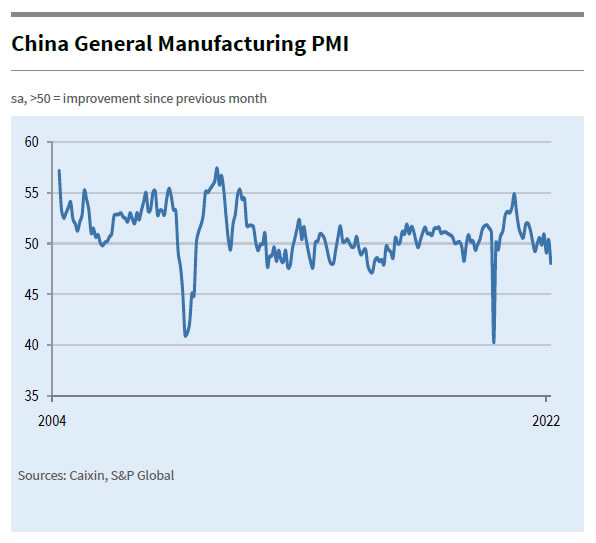
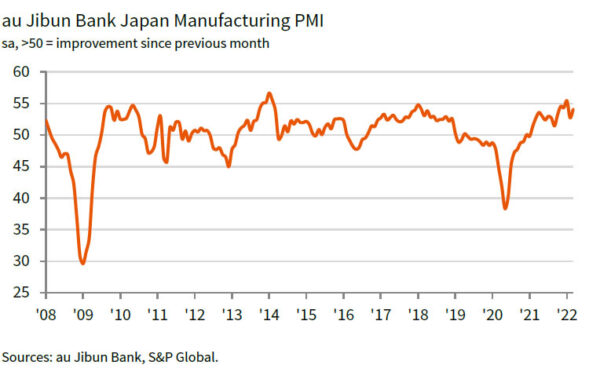
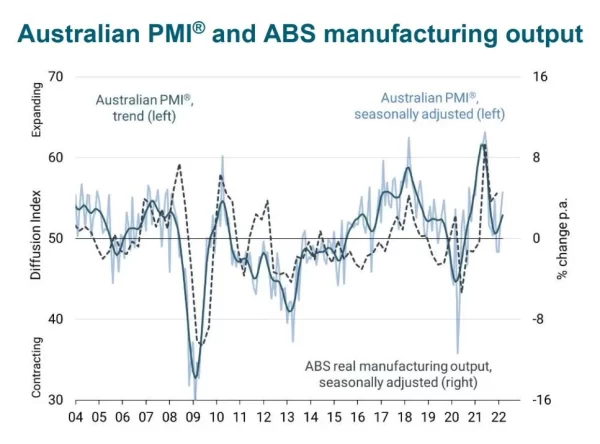
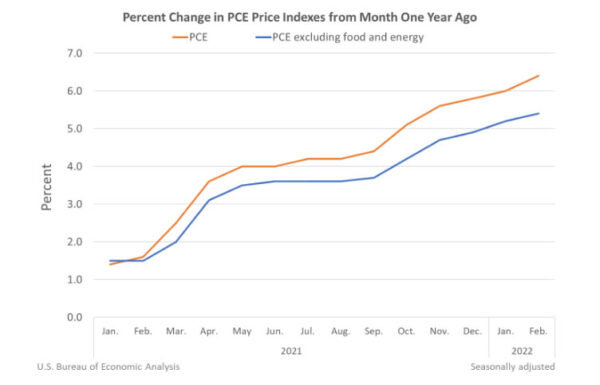
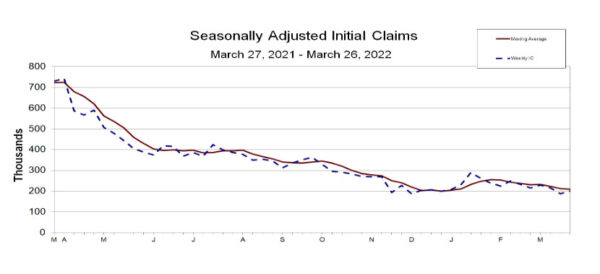
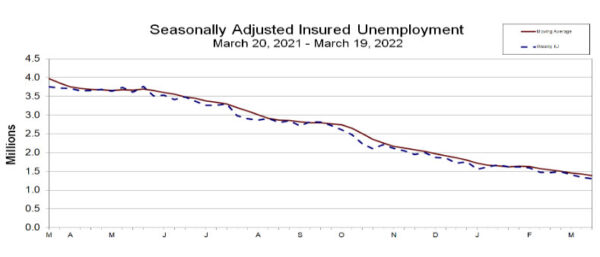
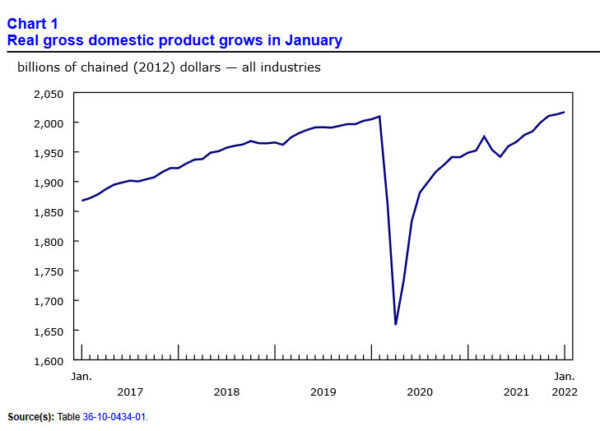
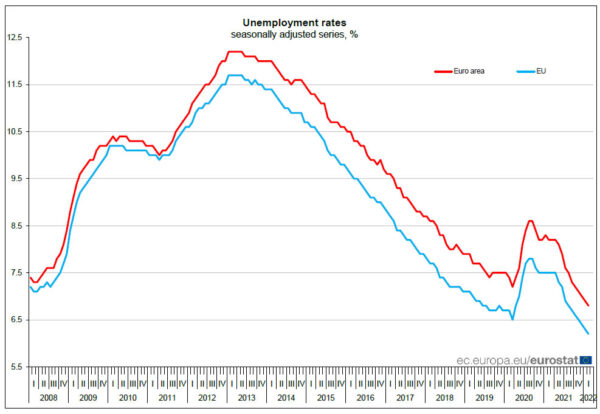
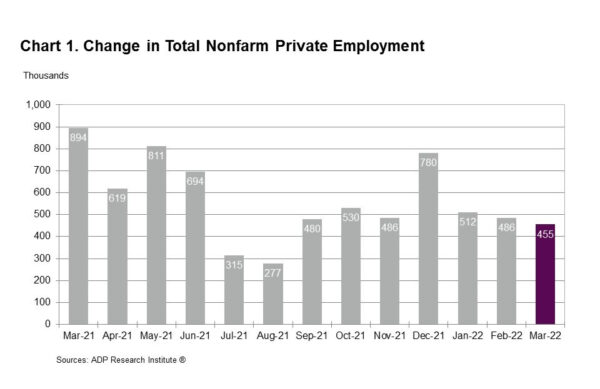
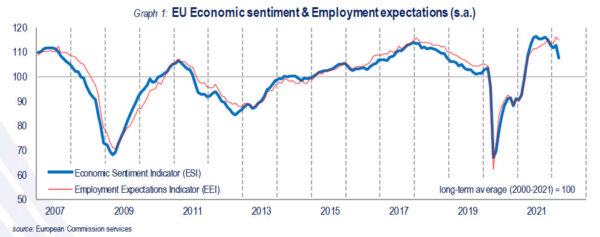

Eurozone CPI rose to 7.5% yoy, core CPI up to 3.1% yoy
Eurozone CPI accelerated sharply from 5.9% yoy to record high at 7.5% yoy in March, above expectation of 6.5% yoy. Core CPI also rose from 2.7% yoy to 3.0% yoy, but missed expectation of 3.1% yoy.
Looking at the main components of Eurozone inflation, energy is expected to have the highest annual rate (44.7%, compared with 32.0% in February), followed by food, alcohol & tobacco (5.0%, compared with 4.2% in February), non-energy industrial goods (3.4%, compared with 3.1% in February) and services (2.7%, compared with 2.5% in February).
Full release here.